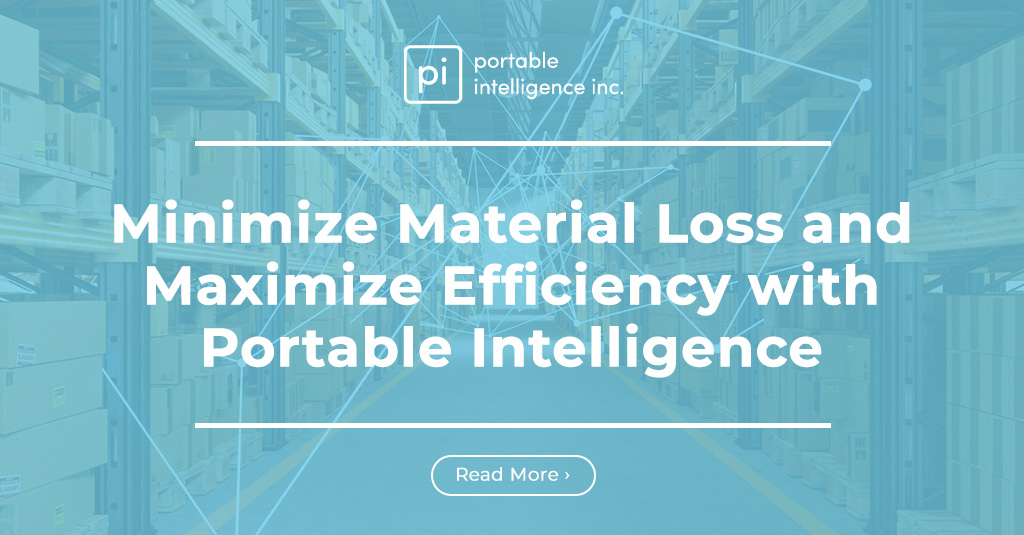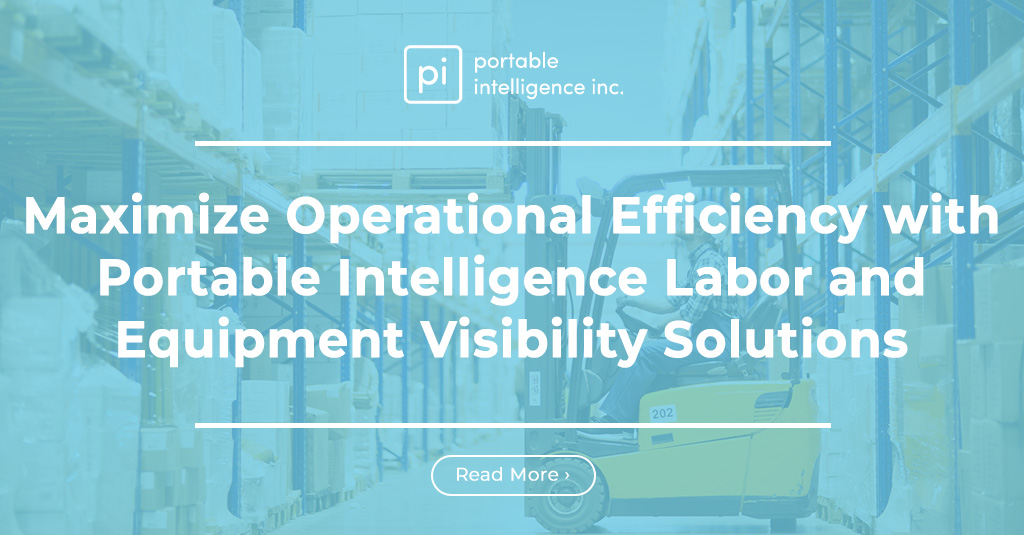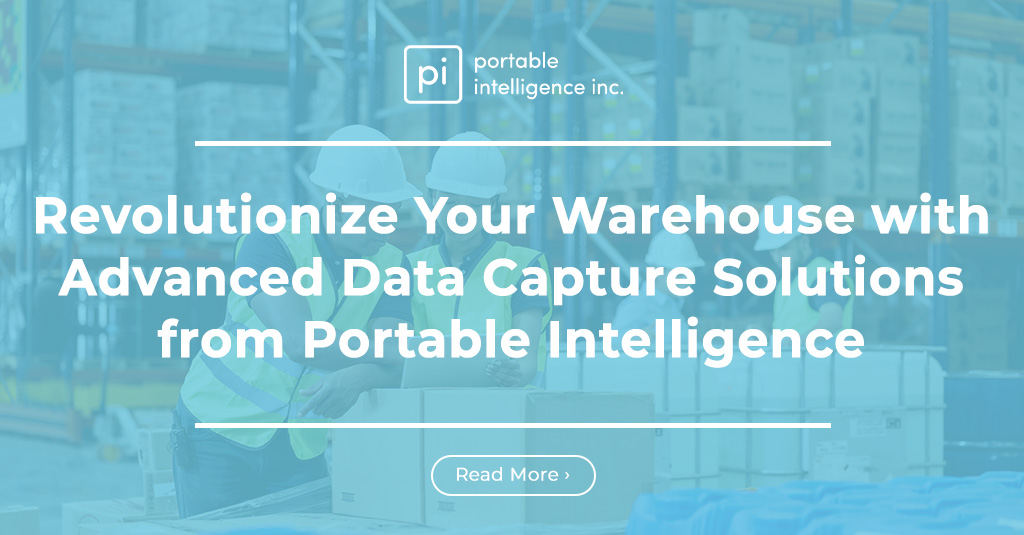In recent years, warehouses have undergone a remarkable transformation driven by technological advancements. Gone are the days of manual inventory management and inefficient processes. The rise of smart warehouses has revolutionized the way businesses handle their logistics, ensuring smoother operations, optimized workflows, and enhanced productivity.
Efficient inventory management is crucial for any warehouse, regardless of its size or industry. With the increasing complexity of supply chains and the need for quick order fulfillment, organizations are seeking innovative solutions to streamline their operations. Smart warehouses leverage cutting-edge technologies to automate and optimize various aspects of the warehouse management process.
The emergence of smart warehouses has paved the way for improved accuracy, efficiency, and safety. With the help of advanced tracking systems, such as forklift tracking solutions, warehouses can achieve unprecedented levels of control and visibility over their assets.
In this deep dive, we will explore the fascinating world of forklift tracking solutions and how they contribute to the rise of smart warehouses. We will focus on one particular technology—ultra-wideband (UWB)—which has proven to be a game-changer in the realm of asset tracking. Unlike traditional methods like GPS and RFID, UWB offers unparalleled precision and real-time tracking capabilities, enabling warehouses to maximize their operational efficiency and meet the demands of modern logistics.
So, let’s embark on this exploration of forklift tracking solutions and uncover the immense potential they hold for transforming the way warehouses operate. Get ready to discover how UWB technology is revolutionizing the industry and empowering warehouses to stay ahead of the curve.
Understanding Forklift Tracking Solutions
When it comes to tracking forklifts within a warehouse, traditional methods like manual documentation and visual inspections have long been the norm. However, these methods are prone to human errors, time-consuming, and lack real-time visibility. With the advent of technological advancements, warehouses now have access to more accurate and efficient tracking solutions.
While GPS and RFID technologies have been widely adopted for asset tracking, they come with certain limitations in the context of warehouse environments. GPS relies on satellite signals and is not suitable for indoor tracking, where the signals may be obstructed. RFID relies on proximity and line-of-sight, which can limit its range and accuracy. Moreover, both technologies may struggle to provide real-time tracking updates required for dynamic warehouse operations.
Ultra-wideband (UWB) technology has emerged as a powerful alternative to GPS and RFID for forklift tracking in smart warehouses. UWB utilizes a broad frequency spectrum to transmit and receive signals, enabling highly accurate and precise tracking. It operates in short-range environments, making it ideal for indoor tracking where GPS signals may not reach. UWB enables tracking with centimeter-level accuracy, ensuring real-time location updates and reliable asset management.
How UWB-based forklift tracking works:
UWB-based forklift tracking systems consist of small UWB tags or transceivers installed on forklifts and anchor nodes strategically placed within the warehouse. The anchor nodes emit UWB signals, which are received by the UWB tags on the forklifts. By analyzing the time it takes for the signals to travel between the anchor nodes and the tags, the system can precisely calculate the forklift’s location in real-time. This information is then relayed to a centralized control system or warehouse management system (WMS), enabling warehouse managers to monitor and manage their forklift fleet effectively.
The Benefits of UWB-based Forklift Tracking Solutions
- Real-time and accurate location tracking: UWB-based forklift tracking solutions provide real-time and highly accurate location updates of each forklift within the warehouse. With centimeter-level precision, warehouse managers can monitor the exact position of forklifts at any given time. This real-time visibility allows for better coordination, efficient workflow planning, and the ability to quickly respond to changes in demand or unexpected situations.
- Improved safety and reduced accidents: Safety is a top priority in any warehouse environment, and UWB-based forklift tracking solutions contribute significantly to enhancing safety standards. With precise location tracking, warehouse managers can identify potential collision risks and implement proactive measures to prevent accidents. Alerts and notifications can be set up to warn forklift operators when they are approaching restricted areas or when there is a risk of collision with other vehicles or pedestrians. By promoting a safer working environment, UWB-based solutions help reduce accidents and injuries.
- Enhanced operational efficiency: UWB-based forklift tracking solutions optimize operational efficiency by providing insights into the utilization of forklifts. Warehouse managers can analyze data on forklift movement patterns, idle time, and productivity to identify bottlenecks and optimize workflows. By understanding the performance and utilization of each forklift, managers can make informed decisions regarding fleet size, allocation of resources, and scheduling, resulting in improved operational efficiency and cost savings.
- Optimal resource allocation and scheduling: UWB-based forklift tracking solutions enable warehouse managers to efficiently allocate resources based on real-time data. By analyzing forklift movement patterns and workload distribution, managers can optimize the deployment of forklifts and assign tasks based on proximity and availability. This reduces unnecessary travel time and ensures that the right forklift is assigned to the right task at the right time, leading to increased productivity and smoother operations.
- Streamlined inventory management: Accurate forklift tracking plays a crucial role in inventory management within a warehouse. UWB-based solutions enable real-time visibility of forklifts carrying inventory, allowing warehouse managers to track the movement of goods throughout the facility. This information facilitates better inventory control, faster order fulfillment, and reduced stock discrepancies. Additionally, the integration of UWB-based forklift tracking with inventory management systems provides seamless data synchronization, enabling accurate stock updates and minimizing manual data entry errors.
Implementing UWB-based Forklift Tracking Solutions
- Hardware requirements: Implementing UWB-based forklift tracking solutions requires specific hardware components. This includes UWB tags or transceivers to be installed on each forklift and strategically positioned anchor nodes throughout the warehouse. The number of anchor nodes needed depends on the size and layout of the facility. Additionally, a centralized control system or warehouse management system (WMS) capable of receiving and processing the tracking data is necessary.
- Installation process and considerations: The installation of UWB-based forklift tracking systems involves mounting the UWB tags securely on each forklift and strategically positioning the anchor nodes within the warehouse. Careful consideration should be given to factors such as line-of-sight, signal range, and the density of anchor nodes to ensure optimal tracking performance. It is advisable to work closely with UWB technology experts or vendors to ensure proper installation and configuration.
- Integration with existing warehouse management systems (WMS): To fully leverage the benefits of UWB-based forklift tracking solutions, integration with existing warehouse management systems is essential. This integration allows for seamless data exchange between the tracking system and the WMS, ensuring real-time visibility and enabling data-driven decision-making. Warehouse managers can access all relevant information through a single interface, streamlining operational processes and enhancing efficiency.
- Staff training and adoption: Successful implementation of UWB-based forklift tracking solutions requires proper training and adoption by warehouse staff. It is crucial to provide comprehensive training sessions to forklift operators, supervisors, and warehouse managers on how to effectively utilize the tracking system and interpret the tracking data. By involving and empowering the workforce, the full potential of the technology can be realized, leading to smoother operations and improved outcomes.
Overcoming Challenges and Considerations
- Initial investment and ROI calculation: Implementing UWB-based forklift tracking solutions involves an initial investment in hardware, installation, and integration. While the upfront costs may seem significant, it is crucial to consider the long-term benefits and potential return on investment (ROI). Conducting a comprehensive cost-benefit analysis and ROI calculation can help justify the investment and assess the financial impact of implementing the technology.
- Scalability and future-proofing: When implementing UWB-based forklift tracking solutions, it is essential to consider scalability and future-proofing. As warehouse operations grow and evolve, the tracking system should be able to accommodate increased forklift fleet sizes, additional anchor nodes, and potential expansion of the facility. Choosing a scalable solution that can adapt to future needs helps avoid costly replacements or upgrades down the line.
- Data security and privacy concerns: With any technology implementation, data security and privacy are paramount. UWB-based forklift tracking solutions involve collecting and storing data related to forklift movement and location. It is crucial to ensure that proper security measures, such as encryption and access controls, are in place to protect sensitive information. Additionally, compliance with data privacy regulations should be carefully considered and adhered to.
- Compatibility with other emerging technologies: As smart warehouse technologies continue to evolve, compatibility with other emerging technologies becomes important. UWB-based forklift tracking solutions should be compatible with other systems or technologies, such as automation and robotics, IoT sensors, and analytics platforms. Ensuring interoperability between different technologies creates a cohesive ecosystem that maximizes operational efficiency and unlocks the full potential of a smart warehouse.
The Future of Smart Warehouses and Forklift Tracking Solutions
The future of smart warehouses lies in the seamless integration of forklift tracking solutions with automation and robotics. By combining UWB-based forklift tracking with autonomous forklifts or robotic material handling systems, warehouses can achieve higher levels of efficiency, speed, and precision. Automated guided vehicles (AGVs) equipped with UWB technology can navigate the warehouse floor, perform tasks, and interact with other assets, creating a truly optimized and automated warehouse environment.
As smart warehouses continue to generate vast amounts of data, advancements in analytics and predictive maintenance play a pivotal role. By leveraging advanced analytics algorithms and machine learning techniques, warehouses can gain valuable insights from the collected data. Predictive maintenance models can be developed to identify maintenance needs and prevent equipment failures, ensuring uninterrupted operations and reducing costly downtime.
The rise of smart warehouses and the adoption of advanced tracking technologies are part of larger industry trends that will shape the future of logistics. These trends include the increasing demand for real-time visibility, the utilization of Internet of Things (IoT) sensors for asset tracking, the integration of artificial intelligence for data analysis and decision-making, and the growing focus on sustainability and energy efficiency within warehouse operations.
The future possibilities for smart warehouses are vast. From enhanced automation and robotics to advanced analytics and predictive maintenance, the industry is continuously evolving to meet the demands of a fast-paced and digitally-driven world. Forklift tracking solutions, powered by UWB technology, will continue to play a crucial role in enabling warehouses to optimize their operations, improve safety, and stay ahead in a competitive market.




